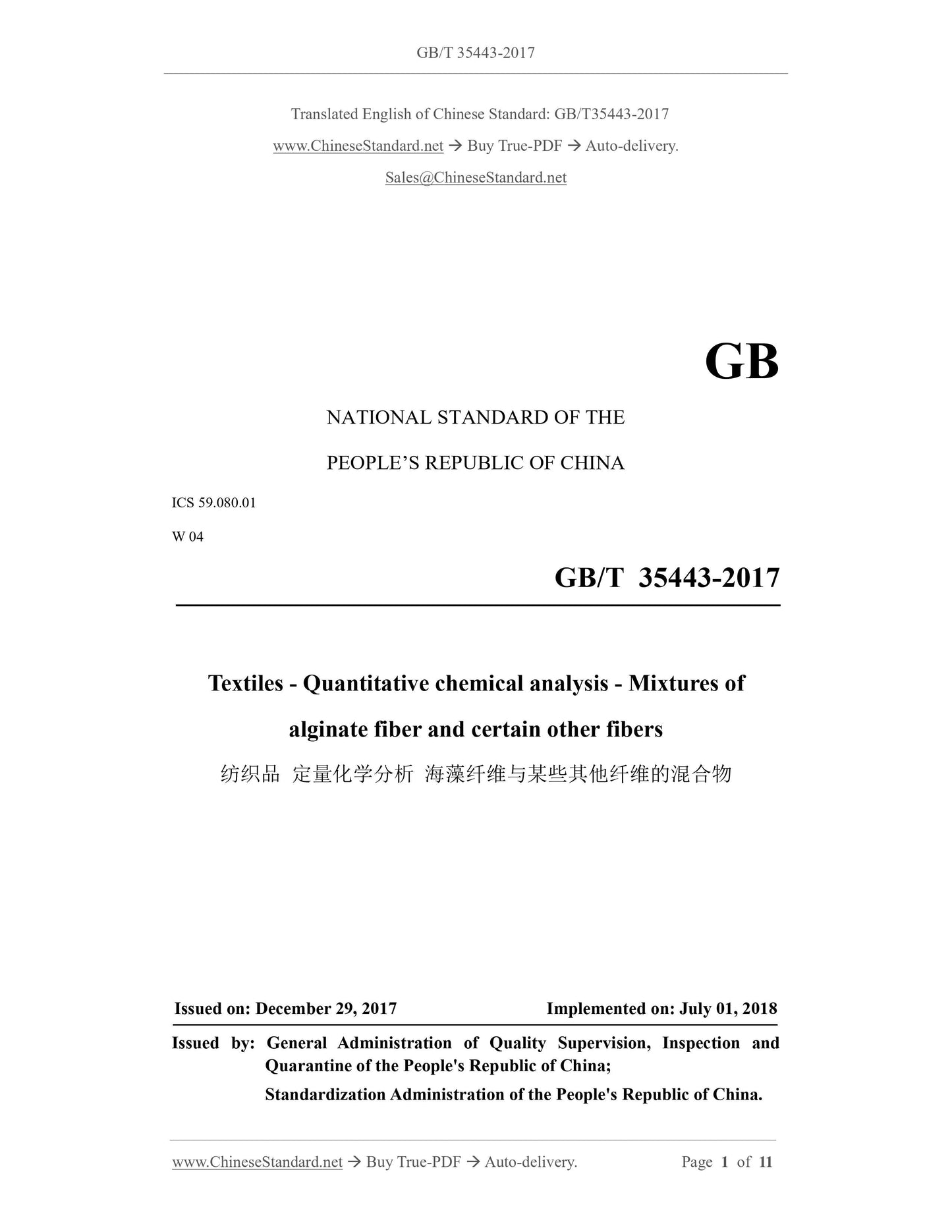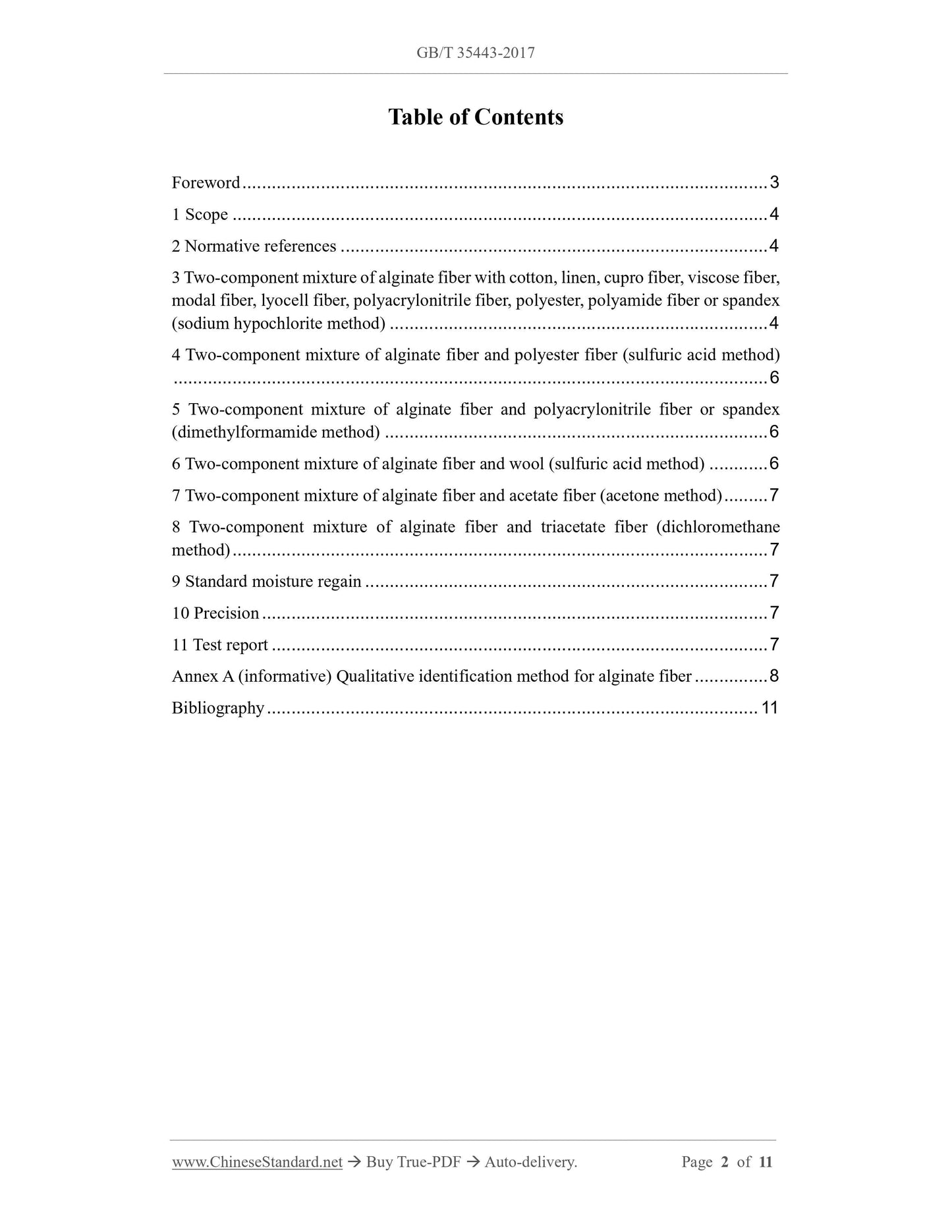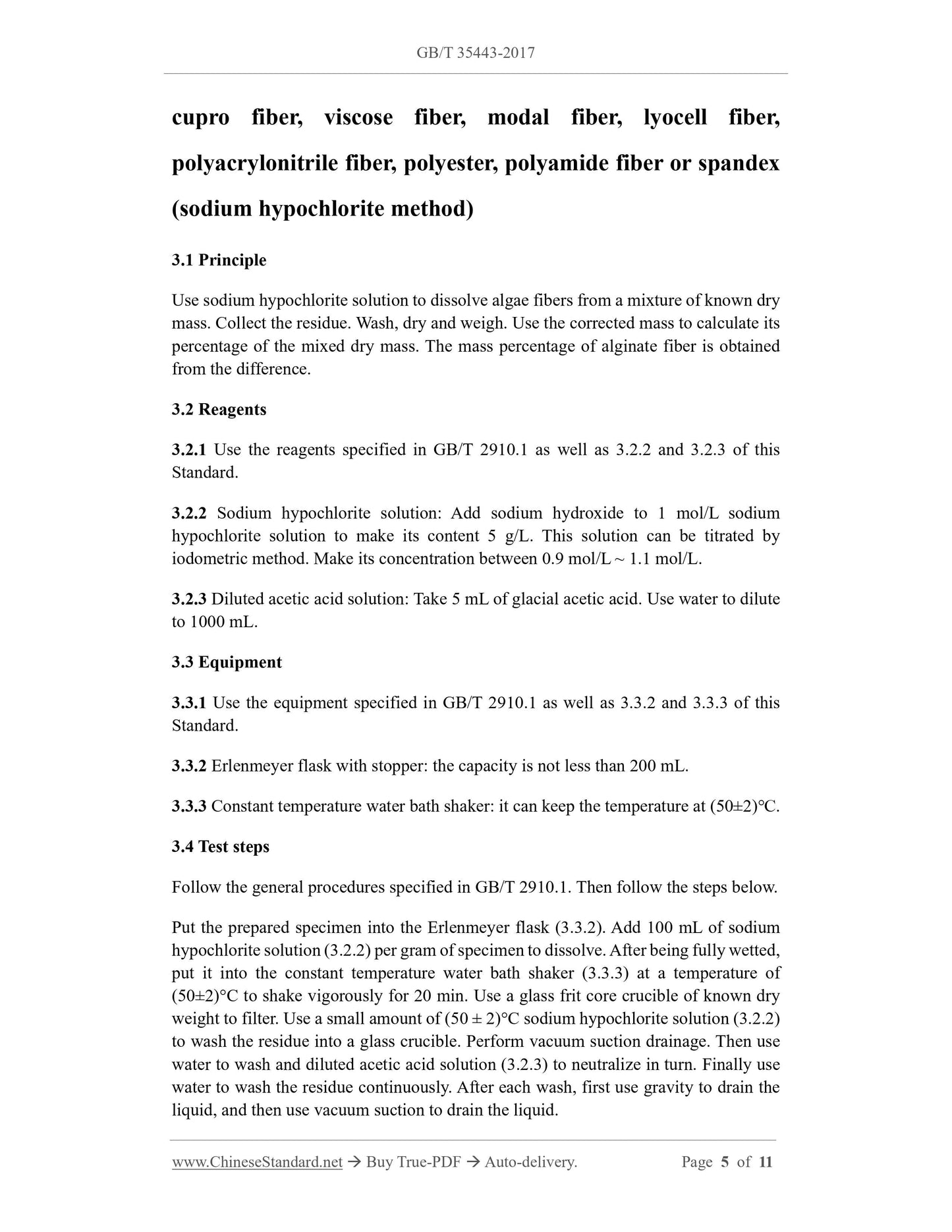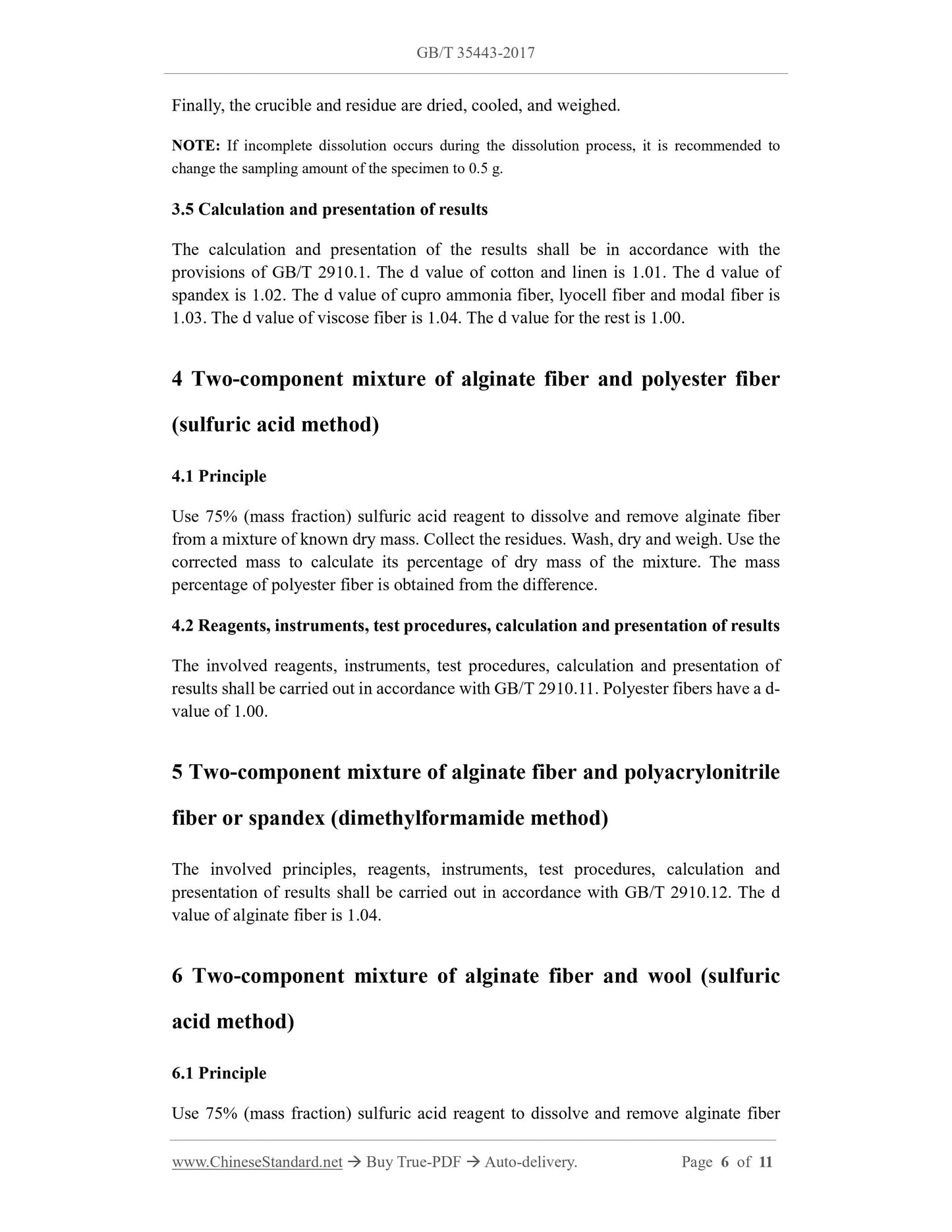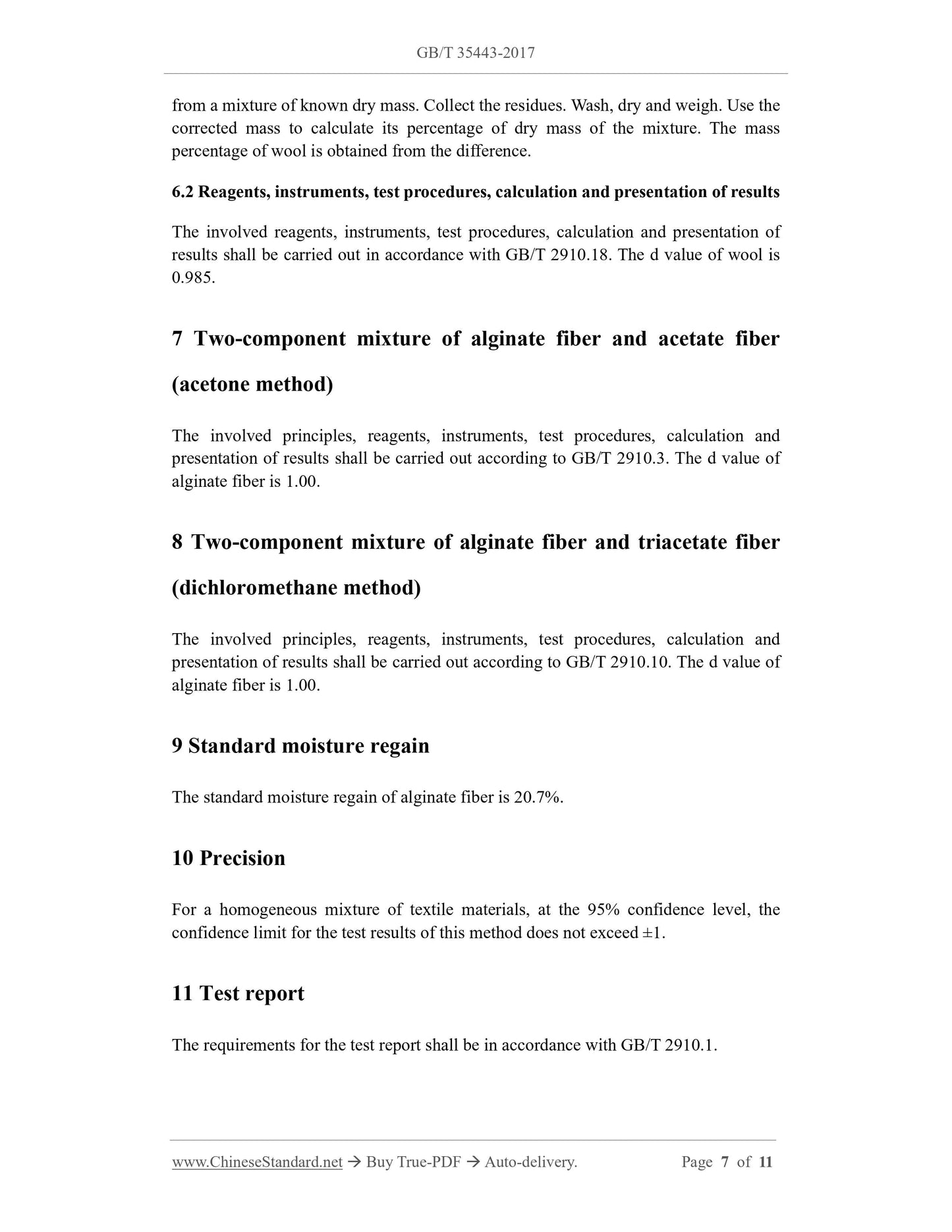1
/
of
6
www.ChineseStandard.us -- Field Test Asia Pte. Ltd.
GB/T 35443-2017 English PDF (GB/T35443-2017)
GB/T 35443-2017 English PDF (GB/T35443-2017)
Regular price
$170.00
Regular price
Sale price
$170.00
Unit price
/
per
Shipping calculated at checkout.
Couldn't load pickup availability
GB/T 35443-2017: Textiles - Quantitative chemical analysis - Mixtures of alginate fiber and certain other fibers
Delivery: 9 seconds. Download (and Email) true-PDF + Invoice.Get Quotation: Click GB/T 35443-2017 (Self-service in 1-minute)
Newer / historical versions: GB/T 35443-2017
Preview True-PDF
Scope
This Standard specifies the method to determine the content of alginate fiber in two-component mixture of alginate fiber and certain other fibers after removing non-fibrous
material.
This Standard applies to two-component mixture of alginate fiber with cotton, linen,
cupro fiber, viscose fiber, modal fiber, lyocell fiber, polyacrylonitrile fiber, polyester,
polyamide fiber, spandex, wool, acetate, or triacetate.
NOTE: See Annex A for the qualitative identification method of alginate fiber.
Basic Data
| Standard ID | GB/T 35443-2017 (GB/T35443-2017) |
| Description (Translated English) | Textiles - Quantitative chemical analysis - Mixtures of alginate fiber and certain other fibers |
| Sector / Industry | National Standard (Recommended) |
| Classification of Chinese Standard | W04 |
| Classification of International Standard | 59.080.01 |
| Word Count Estimation | 10,172 |
| Date of Issue | 2017-12-29 |
| Date of Implementation | 2018-07-01 |
| Regulation (derived from) | National Standards Bulletin 2017 No. 32 |
| Issuing agency(ies) | General Administration of Quality Supervision, Inspection and Quarantine of the People's Republic of China, Standardization Administration of the People's Republic of China |
Share
